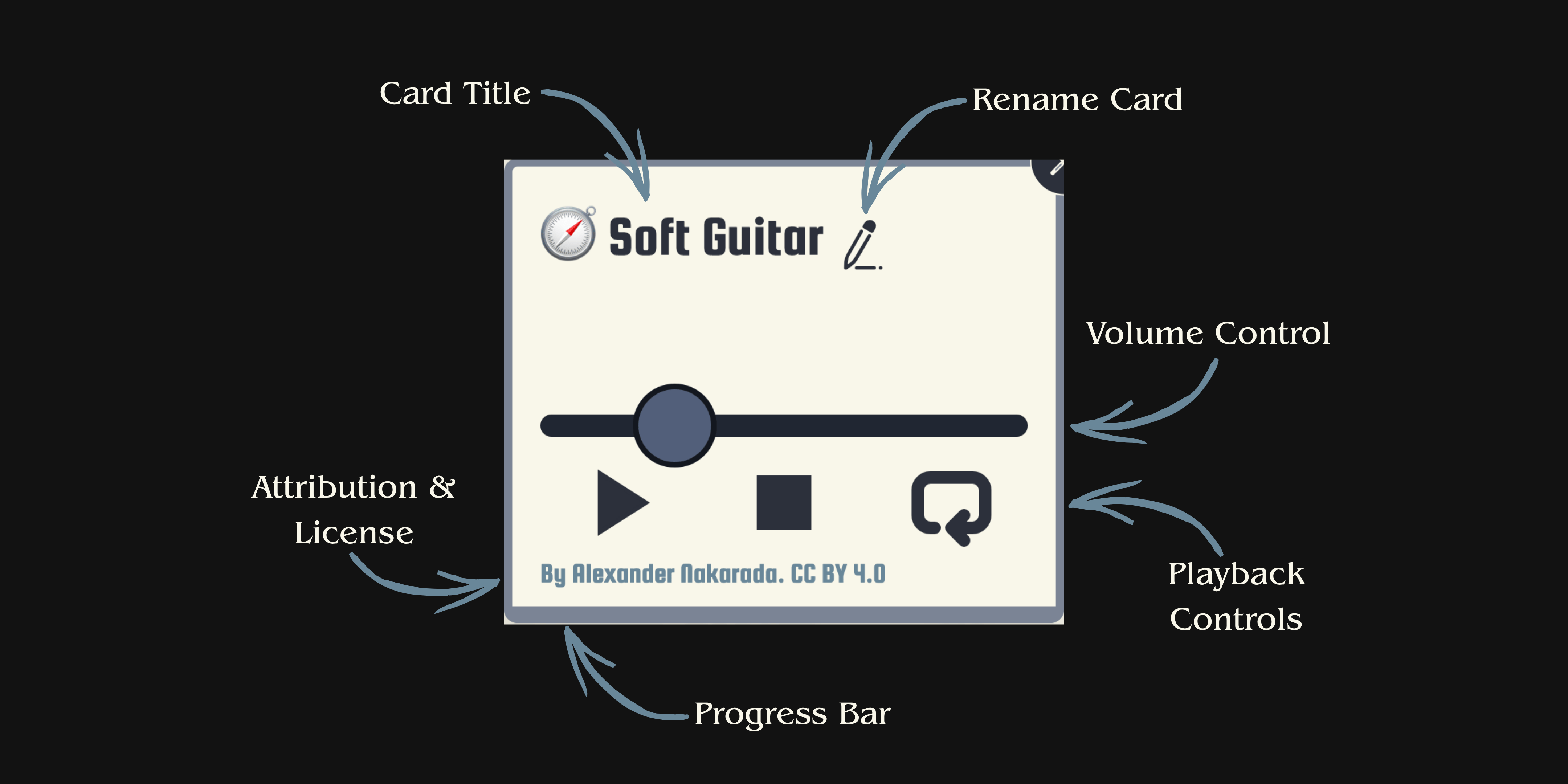Music Cards

Music cards are meant to evoke strong emotion into your players. They are meant to help them get in the mood of the scene, like making their hearts start racing with some big drums as you announce "roll initiative!".
Music cards work more or less like a regular soundboard. They will play when you press play, pause when you press pause, and stop when... well, you get it. However, there are a lot of scene-wide settings that affect how music plays! We encourage you to play with the settings to figure out what combination works best for your scene. For instance, you may want music to work more like a playlist, where only one track is playing at a time, and the next track starts immediately after the current one ends.
Here's a run-down of the different controls:
- The Card Title is a title for that particular card. You can have the same sound on two different cards, and give one title to each if you'd like. You can edit the title by clicking on the pencil icon, or double-clicking on the title itself. There is a character limit for card titles.
- The Attribution and License information. They are clickable links tied to particular sounds, and won't change regardless of where you move the card, or if you change the title. Only sounds provided by Bardic Tools have license information in them.
- The Volume controls, which are self-explanatory.
- The Playback controls. They consist of a Play/Pause button, a Stop button that goes back to the beginning of the sound, and a toggle for looping the sound.
- The Progress bar. Useful for visualizing where in the music track you are currently. It's also clickable! You can click along the track to move the song forwards or backwards.
You can click on the progress bar to move the sound further forward or backward!
Yes, we know we say this above as well, but this is in a nice green box, in case you missed it the first time.